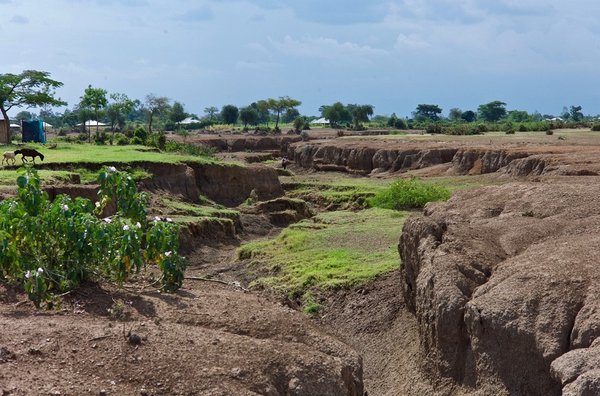 Read this article in French
Read this article in French- Share this article
- Subscribe to our newsletter
Urgent need for new approach to combat global grassland degradation
A team of international experts, led by the British University of Manchester with input from CABI Switzerland, proposes a series of strategies to halt the degradation of grasslands globally and promote their restoration to meet sustainable development goals.
The study highlights how the world’s grasslands – which cover about 40 per cent of the Earth’s land surface and some 69 per cent of the world’s agricultural land area – are under severe threat from on-going degradation. Yet grasslands are largely ignored in sustainable development agendas. The authors spell out how this poses a major threat to hundreds of millions of people around the world who rely on grasslands for food, fuel, fibre, medicinal products, as well as their multiple cultural values.
The team, which includes experts from major grassland regions of the world, proposes a set of strategies to combat grassland degradation and promote restoration. These strategies include increasing recognition of grasslands in global policy, developing standardised indicators of degradation, using scientific innovation for effective restoration at regional and landscape scales, and enhancing knowledge transfer and data sharing on restoration experiences. They argue that implementing these strategies is even more urgent because of on-going climate change, which is exacerbating the problem.
Lead author Professor Richard Bardgett of The University of Manchester said, “Grassland degradation represents a major global challenge that must be addressed if we are to achieve key targets of biodiversity agendas, such as the Aichi Biodiversity Targets of the Convention on Biological Diversity (CBD), and the United Nations Sustainable Development Goals (SDGs), including restoration and sustainable use of terrestrial ecosystems, hunger and poverty alleviation, and climate change mitigation. Put simply, if grasslands are to be managed sustainably, then both global and regional policy must be revised to recognise the value of grasslands for multiple ecosystem services and establish targets for their protection, restoration and sustainable management.” Bardgett stressed.
A standardised approach for assessing grassland degradation and restoration is needed
The authors propose a standardised approach for assessing grassland degradation and restoration based on shared understanding among stakeholders of potential trade-offs in ecosystem services in degraded and restored grasslands. They illustrate how their approach can be used in different situations, including agricultural grasslands in Europe and natural grasslands in arid and semi-arid regions of Eastern Africa, to identify restoration options that best deliver the needs of different stakeholder groups, including farmers or pastoralists, conservationists and tourists.
Dr Urs Schaffner of CABI Switzerland, who specialises in solutions to woody plant invasion in grasslands in East Africa, said, “Whilst we demonstrate how our standardised approach can be applied using specific case studies, future research is needed to test this approach in different contexts and at local and larger scales”.
“Research is also needed to better understand different societal perceptions of grasslands and the reasons why they have been neglected in sustainability policy, and to develop and test promising new ways of assessing grassland degradation and restoration.”
Dr Giselda Durigan, one of the co-authors from Brazil, whose work seeks to improve the management, conservation and restoration of the Cerrado grasslands, highlighted that the study also demonstrates some trade-offs between ecosystem services, exemplified by the high risk posed by misguided tree planting in natural grasslands to sequester carbon at the expense of water provisioning and biodiversity.
The authors argue that grasslands and the benefits they provide in sustainability policy should be given due attention ‘on a par’ with forests. They hope that their recommendation will guide future research and policy needed to halt grassland degradation and achieve restoration success.
Full paper reference
Bardgett, R.D., Bullock. J.M., Lavorel, S, Manning, P., Schaffner, U., Ostle, N., Chomel, M., Durigan, G., Fry, E., Johnson, D., Lavallee, J., Le Provost, G., Lou, S., Png, K., Sankaran, M., Hou, X., Zhou, H., Li, M., Ren, W., Li, X., Ding, Y., Li, Y and Shi, H. (2021) Combatting global grassland degradation. Nature Reviews Earth and Environment, DOI: 10.1038/s43017-021-00207-2.





Add a comment
Be the First to Comment